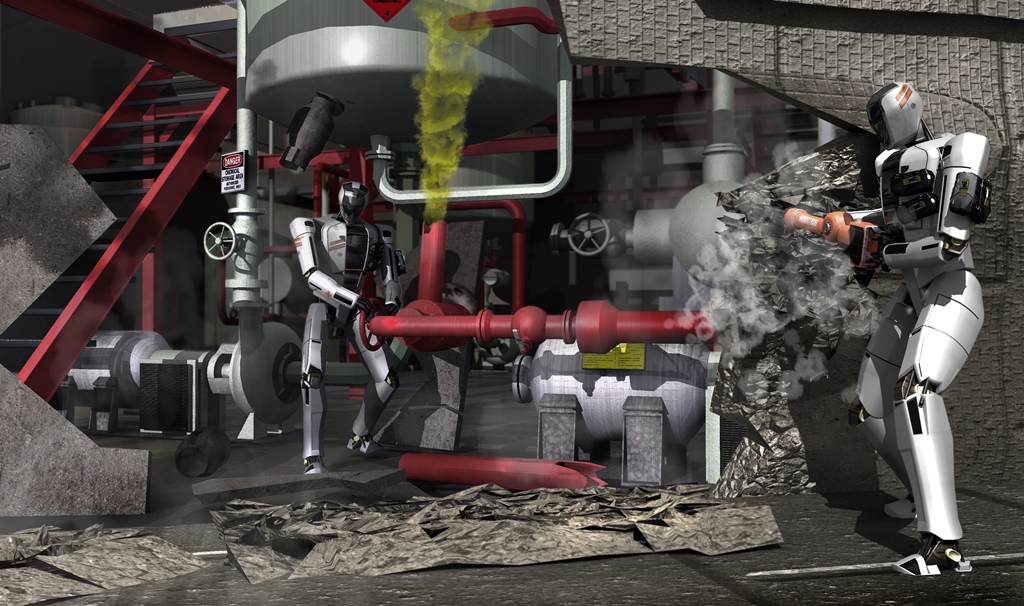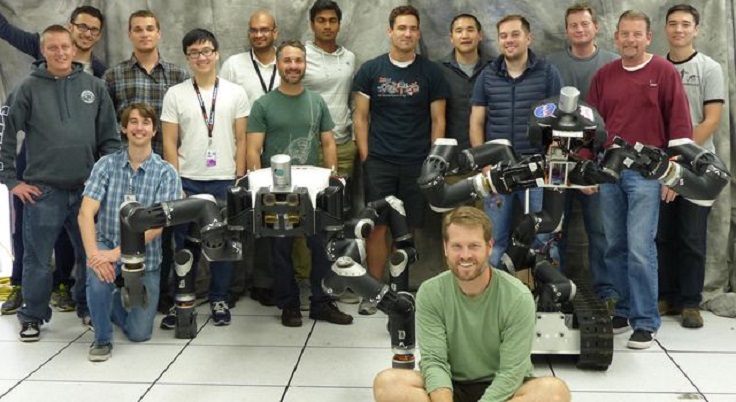
Crowdsourcing robot technology to help humans
When observing DARPA's ongoing Robotics Challenge - where machines are required to navigate obstacle courses, perform complex tasks, and make their way through debris-strewn environments - words like "Skynet" and "Judgement Day" tend to come to mind. But beyond these cliched tropes, there is the palatable sense of inspiration and excitement that the competition has engendered.
Never before have so many robots and roboticists come together in one place with a single purpose in mind. That purpose - to develop robots that will one-day be capable of assisting humans in responding to natural and man-made disasters, assisting in search-and-rescue operations, and entering places or assessing situations that too dangerous for humans.
In short, the competition aims to create robots that can work in all the dirty, dangerous or degraded environments so that human lives need not be risked, And seeing it all unfold is an exciting thing indeed. As Jonathan Hurst, a roboticist at Oregon State University and competitor in the Challenge put it: "It’s the biggest collection of robots in one place that’s ever happened. Some people are calling it ‘Robo-Woodstock.'”
Gill Pratt, the program manager for the DRC, expressed similar excitement: “We’re excited to see so much international interest in the DARPA Robotics Challenge Finals,” he said. “The diverse participation indicates not only a general interest in robotics, but also the priority many governments are placing on furthering robotic technology. As this technology becomes increasingly global, cooperating with the United States in areas where there is mutual concern, such as disaster response and homeland security, stands to benefit every country involved.

The DARPA Robotics Challenge (DRC) seeks to promote innovation in human-supervised robotic technology for disaster-response operations. Credit: DARPA
About the Robotics Challenge
Originally announced back in 2012, the competition brought over 30 teams from around the world together to compete in the DRC Trials, which took place on December 20th and 21st, 2013 in Florida. At this event, robots were required to make their way through obstacle courses and pass skill-testing scenarios - including driving a utility vehicle, walking across rubble, removing debris, opening a door, climbing, traversing a walkway, and using tools.
The participating robotics teams
Earlier this month, the DRC announced that after three years, it had narrowed the competition down to 11 team. These teams will now go on to compete in the Finals, which will be held at the Fairplex in Pomona, Florida, on June 5th and 6th. They include Team MIT, NASA's Robosimian and Surrogate teams, Lockheed Martin's Team Trooper, and Team KAIST from South Korea's Daejeon Metro City.
Here, they will be joined by 14 additional entries from Germany, Japan, South Korea, mainland China, Italy, Hong Kong, and the US. To qualify, the new teams had to submit videos showing successful completion of five sample tasks, which included engaging an emergency shut-off switch, getting up from a prone position, walking for ten meters without falling, passing over a barrier, and rotating a circular valve 360 degrees.

NASA's team Robosimian and Surrogate, two Finalists that will be competing this coming June. Credit:
In total, there will be 15 different commercial and custom robots competing in the DRC Finals. Though seven teams will be using the Atlas anthropomorphic robot from Boston Dynamics - which was upgraded earlier this year in order to be completely wireless - they will each be responsible for equipping it with unique software, user interfaces, and coming up with their own strategies.
“We’re looking forward to seeing how the teams ensure the robustness of their robots against falls, strategically manage battery power, and build enough partial autonomy into the robots to complete the challenge tasks despite DARPA deliberately degrading the communication links between robots and operators,” said Pratt.
The custom robots that will be competing include such favorites as Team Tartan Rescue's CHIMP (CMU Highly Intelligent Mobile Platform) robot. Hailing from the National Robotics Engineering Center at Carnegie Mellon University in Pittsberg, the CHIMP robot - aptly named because of its primate-like configuration - has already demonstrated an ability to move quicker than its counterparts, though its reliance on wheeled feet may prove a problem in rubble-strewn environments.
NASA's Robosimian and Surrogate Robots will also be returning, two entries that were built at NASA's Jet Propulsion Laboratory in Pasadena, California. The former (as the name would suggest) is designed to resemble a simian and has the same range of motion using all four of its appendages, as well as sensors embedded throughout its body. The latter, however, has a wheeled chassis, head-mounted sensors, and two robot arms that were created using extra limbs from the Robosimian.
Then there's team Hubo, made up of roboticists from the Korean Advanced Institute of Science and Technology (KAIST). Their anthropomorphic robot will be joined by two other Korean designs - such as team THORMANG from Seoul University and THORMANG's twin, which will be operated by the Seoul-based company ROBOTIS as well as technicians from Korea Tech University and the Korea Robotics Society.
There's also team Thor, the makers of the THOR-OP robot, which is based off a collaborative design spearheaded by the Robotics & Mechanisms Laboratory at UCLA and the General Robotics, Automation, Sensing and Perception (GRASP) Laboratory at the University of Pennsylvania. Though anthropormorphic in configuration, the THOR-OP design is light-weight and emphasizes agility over ruggedness.
And then there's team ATRIAS, a group of competitors from the Oregon State University Dynamic Robotics Laboratory. Having built a series of prototype bipedal robots designed to test and demonstrate theoretical concepts for efficient and agile locomotion - ultimately for the sake of creating a robot that can walk and run in rough terrain - their robot should be well suited to the tasks of navigating difficult courses. Whether it can handle tools and do manual labor as effectively as the others remains to be seen.
Though the tasks for the Finals will be similar to the Trials, additional elements will be put in place to further challenge the team's designs.
For starters, robots will not be permitted to use power cords, fall arrestors, or wired communications tethers. Humans operators will also not be allowed to physically intervene if a robot falls or get stuck this time around. Speed will also be more heavily weighed in the scoring and a time limit of one hour will be imposed on tasks. Lastly, communications will be further degraded and intermittent to test the robot's ability to adapt in disaster scenarios.
The DRC Finals event is free and open to the public and media. In addition to the competition, DARPA will be hosting the DRC Expo - an on-site robotics exposition that will showcase technology related to disaster response, robotics, and unmanned aerial systems, and include an overview of DARPA’s mission and legacy.
One can only hope the competition gives rise to robots that will save human lives, and not take them!
Sources:
- www.drc-hubo.com/
- www.theroboticschallenge.org/media
- mime.oregonstate.edu/research/drl/atrias/
- www.bostondynamics.com/robot_Atlas.html
- www.jpl.nasa.gov/news/news.php?feature=4401
- www.wired.com/2015/03/darpa-challenge-robots/
- www.darpa.mil/NewsEvents/Releases/2015/03/05.aspx
- phys.org/news/2013-07-kaist-hubo-ready-darpa-robotics.html
- www.theroboticschallenge.org/news-post/drc-finals-announcement
- www.theroboticschallenge.org/upgraded-atlas-robot-announcement
- archive.darpa.mil/roboticschallengetrialsarchive/node/56/index.html
- www.darpa.mil/Our_Work/TTO/Programs/DARPA_Robotics_Challenge.aspx
Top Image: CHIMP Robot, from the Tartan Rescue Team, Carnegie Melon University. Credit: DARPA








